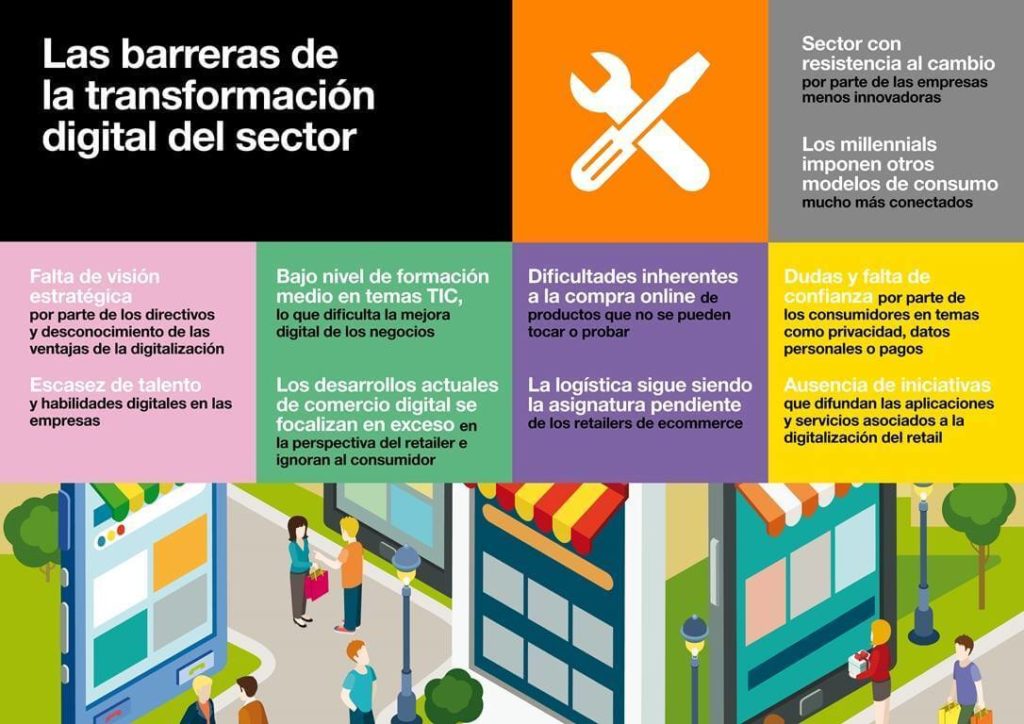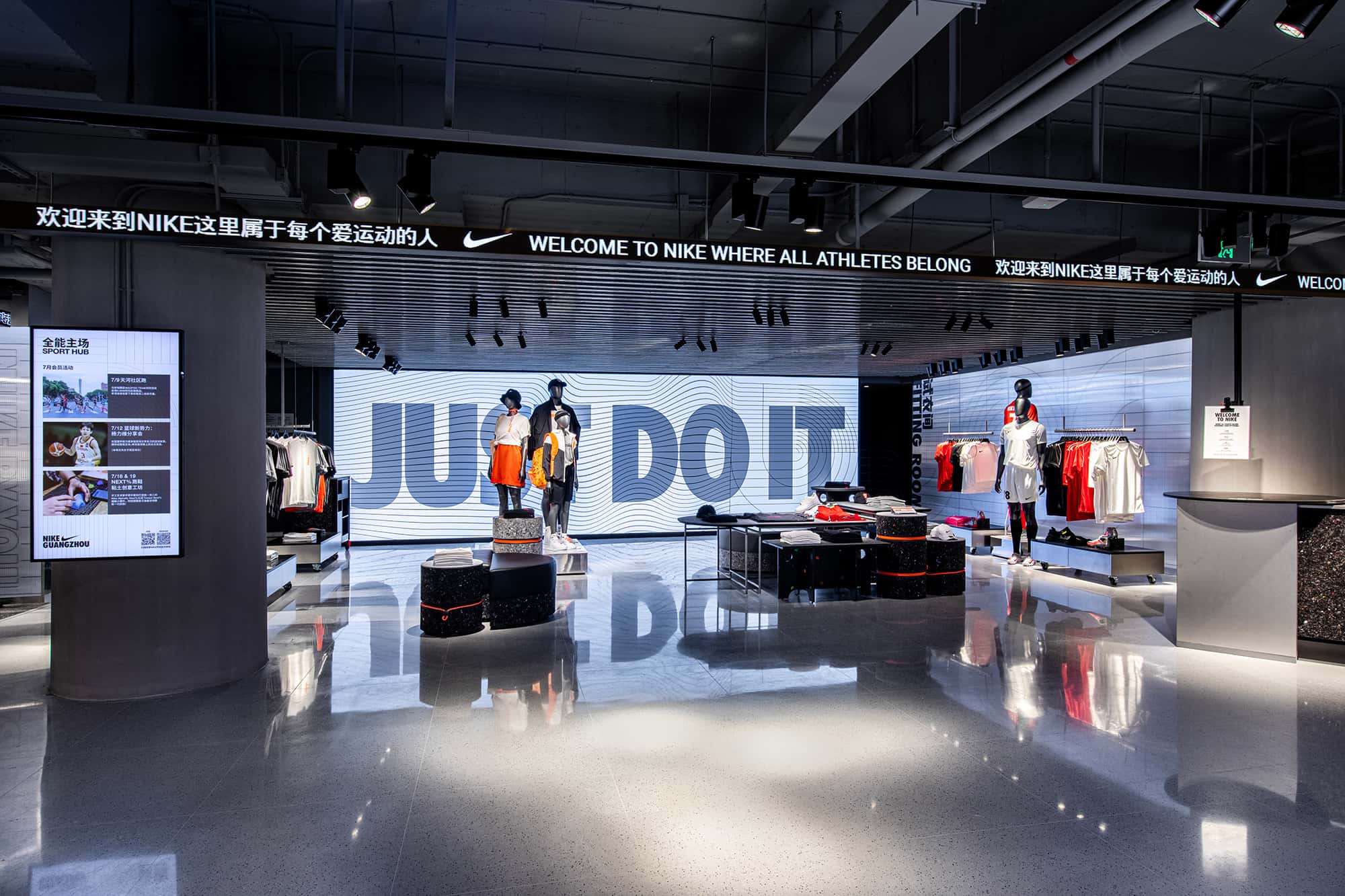
“The growth of e-commerce and the current crisis have drastically affected physical stores. This has created a real need for your shop to adapt to these new times by evolving and digitalising.”
Business digitalisation is a fact; it is the path to the future, adapting your business to the new needs of the consumer. Evidently, the behaviour of customers when it comes to shopping has changed rapidly and significantly over many years. This is due to the constant evolution of new technologies and their swift implementation in society. The digital world has changed all consumer habits, and many of these new behaviours inevitably impact your business.
If you observe consumer behaviour, you will immediately realise that the customer is omnichannel. Previously, customers had very few channels to learn about or purchase products and services. But with the advent of new technologies and the internet, multichannel communication has emerged; customers have access to multiple different channels where they can learn about and buy any products and/or services. This creates a new need for the consumer, and business owners must react to give their customers what they seek.
Omnichannel is the most important concept in today’s retail world. From the customer’s perspective, it is understood as the means for the user to utilise all existing channels to make purchases. In short, it is about implementing a process where your business has the capability to not only be present in as many channels as possible but also to offer its products and/or services in them in a simple, accessible, useful, and innovative way.
It is obvious that if you appear in the maximum number of channels that your customers use, your chances of selling will increase. This process is very current, and now you can purchase a product from a physical store, online store, through social media, online sales platforms, streaming, app, etc.
In fact, it is most common to start exploring a product or service that interests us through a chatbot on a website but eventually resort to the telephone service to complete the information. Using a mobile app or an e-commerce website to learn about a certain product and, however, end up going to the physical store to check its feel and quality. Or find a promotion on social media but then go with that same discount to the corresponding shop to make a purchase.
It is necessary to appear in multiple channels, but it is essential to merge and integrate all of them so that there are no visible divisions for the consumer. This will allow a seamless shopping experience across all channels.
Among the omnichannel strategies for the digital transformation process, the following stand out:
There are many benefits that omnichannel offers, among them is what every business wants to achieve: obtaining data from its customers.
By contacting your customers through a greater number of channels, you will be able to better understand their tastes and needs, which will make you go ahead by offering them what they are looking for. Moreover, as we have already seen, we live in a world of constant change, and perhaps what the customer likes today, they may not tomorrow.
Therefore, having all your channels unified will allow you to obtain updated information about your customers and thus create perfect loyalty and experience improvement strategies.
All changes generate fears because it implies stepping out of your comfort zone, and there are barriers to achieving them. But updating your business is a necessary change that will make you improve and achieve greater success. The transformation of commerce does not stop; every day, innovations occur in different areas, new ways of acquiring a product, new ways of informing yourself about it, new ways of advertising them…
The evolution of technologies has led to the digitalisation of businesses. In Spain alone, in 2018, Spaniards spent 34.8 billion euros on online shopping, and this figure continued to rise in 2019. Still, many business owners were reluctant to start a digitalisation process in their companies and continued with the traditional model. But a new situation surprised us all with the appearance of Covid-19.
This global pandemic has shown us in 2020 the disastrous consequences of not having your business updated to the new needs of the consumer. We have seen how businesses with a presence in the digital world have come out stronger from this situation, even witnessing significant growth in their sales. However, the other side of the coin faces a very different situation, with businesses that were not updated being forced to close their points of sale.

It is important to know that digital transformation consists of three fundamental pillars: processes, talent, and technology. Therefore, no matter how much technology we develop, without a clear methodology and good talent management, we will not be able to enter the transformation era. That is why it is very important to follow a sensible plan, not forgetting any aspect and always creating strategies directed at the consumer. Everything must be carefully detailed so that each action you take achieves the results you expected.
“To reactivate the economy after covid-19 and generate employment, it is necessary to accelerate the digitalisation of the industry, especially SMEs and the self-employed.” Fundación Telefónica.
As you already know, commerce has evolved drastically in a few years. If you don’t want to be left behind, you must keep up. It is about “renewing or disappearing.” You need to digitalise your store and implement new technologies at your point of sale if you want to be among the best in your sector. This way, you will ensure that your customers have a different experience and connect with your brand.
Technology at the point of sale is a very powerful tool to attract customers, and it advances so quickly that you will not struggle to find innovative ideas to implement at your point of sale. It will also help you be more efficient in the way you work, create more personalised experiences so that the customer connects in a special and different way with your brand, thus creating an emotional bond between the two.
As mentioned at Retail Forum, new technologies applied to commercial spaces generate added value. Many press articles and industry workers already talk about the characteristics of the shops of the future, and among others, we can find the following elements:
Crowd Prediction System: This tool allows you to control the flow of people, which is quite important when organising many aspects of the shop; user routes, product organisation, worker schedules, stock distribution according to demand, knowledge of hot spots in the establishment…
Augmented Reality Smart Fitting Rooms: This tool is already implemented in many establishments. With these fitting rooms, the customer can virtually try on different garments through interactive screens and thus enjoy a different and innovative shopping experience. With this technology, you can access and analyse a lot of information about your customer; for example, which garments customers try on the most, which ones they buy, or the tried-on garments they eventually do not purchase.
In the online part, this concept of smart fitting rooms has also been adapted, called digital fitting rooms, through the camera of a mobile device customers can try on different garments available from the brand. A clear example is Multiópticas with the option to try different eyeglass frames on their website.
Omnichannel Delivery and Return Process: Every detail counts. Surely, at some point, you have decided not to make an online purchase because the return was complicated and could not be done in the physical store. That is why it is essential to merge all channels as efficiently as possible. Streamline the delivery and return processes, making them effective and convenient for customers.
RFID Tags: These allow the transmission of information about an object through radio frequency waves. To do this, an RFID tag is needed, which allows storing, transmitting, or identifying that data. Examples of this technology include the security control in shops to prevent item theft, access control, warehouse inventory control, etc.
Self-Checkout Smart Registers: Present in many types of shops like Decathlon. Through the RFID tags that all their products have, customers can pay for their items without needing to scan them and pay via mobile or card. This seemingly simple element is a technology that customers appreciate, making them feel more independent during the payment process and speeding it up at the same time.
Long waits in queues are one of the main reasons customers leave the shop empty-handed. Therefore, the speed and efficiency provided by these registers are undoubtedly the future.
NFC Technology: Based on wireless communication that allows data exchange between devices, derived from RFID tags. The focus is not on exchanging large amounts of data, but rather its strength lies in the speed of communication. Examples of this technology include mobile payments in physical shops and identification at the register without needing to use a card.
Interactive Screens and Digital Signage: These are very important elements in your business, with them you can inform about the products in your shop, provide corporate information about your brand, use moving images to capture the visitor’s attention, or even make them interactive to improve the relationship with your customer. This type of technology allows you to establish better communication with your buyers to generate a bond and impact them positively so that they remember you.
The implementation of this technology in shop windows is an element that inevitably attracts the customer. Using luminous elements, LED screens, advanced mechanisms… The technological world opens up endless possibilities for decorating and designing your shop window.

Smart Content: Obtaining specific data about customers is one of the most sought-after goals for all businesses. When the purchase is made online, obtaining information about the buyer is easy, different programmes or the website manager itself provides it, but how can you obtain data about customers when they buy in your physical shop? There is only one answer: Smart Content.
Smart Content is an innovative advertising format that combines the use of data and business intelligence to create intelligent digital content at points of sale.
Through cameras installed in your establishment, you can obtain important data such as: analysing the profile of customers by gender and age, at different times of the day and on different days. Identifying hot zones with heat maps, understanding the customer journey in your shops, and discovering recurring profiles.
By using CMS management software for the content of your digital signage and artificial intelligence, offline data (sales, inventory, foot traffic…) as well as external data that may affect it (weather, sporting events…) are analysed to create a predictive model of your audience’s behaviour and personalise the content on your screens according to your customer’s traits.
Anonymous information allows you to interact in real-time with the foot traffic in your shop and generate a unique experience for your buyers.
Virtual Reality: In virtual reality, everything you see is created and developed with a computer, and it is used through virtual reality glasses. An example of this is Volvo, where you can test their cars using virtual reality glasses.
Beacon Technology: The beacon network, also known as Bluetooth Low Energy (BLE) applications, allows any brand to detect exactly where a customer is through Bluetooth and offer them a personalised experience with notifications and messages. The American supermarket Target uses this technology. In this case, we can see beacons located in the aisles so that when a customer passes by, they receive a push notification informing them of promotions and offers, as well as discount coupons for their purchase.
Gamification: This is a learning technique that transfers the mechanics of games to the educational-professional environment to achieve better results. It serves to reward specific actions through different systems such as web games, applications, and points cards. The points earned can be redeemed for coupons, prizes, discounts… It is a term that has gained enormous popularity in recent years, especially in digital and educational environments, as it improves the customer experience with the brand.
Digital Wallet: Digital payments, with devices such as mobile phones or smartwatches, are increasingly on the rise worldwide, expanding to over 20,000 shops. It is estimated that 31% of Europeans will likely use a digital wallet on their mobile device in the coming years.
Merging the Physical Environment with Social Media: We can also take advantage of the fact that 92% of the world’s population has a mobile phone to merge, for example, social media or your brand’s mobile application with a purchase process that the customer is carrying out in your physical shop.
These elements are not far from reality; in fact, in many shops, we can already enjoy these technological advancements. There are many digital options and solutions at your disposal. You must use them to your advantage; update your business and make it more economically profitable.
Now I will tell you about the main benefits of digital transformation for companies, according to NDS Cognitive Labs, so you will see that, although it is a complex path, it will be worth it.
As you can see, there are many technologies you can implement in your business to digitalise it and stay ahead of societal changes. It’s simple: renew or disappear. You cannot afford to be left behind; it is necessary to invest in digitalisation if you want to ensure your business’s success. Additionally, the benefits are endless. Only then will you achieve a large number of loyal customers and an increase in your sales.
You may also be interested
open
08:00 AM-18:00 PM Monday – Friday
08:00 AM-18:00 PM Monday – Friday